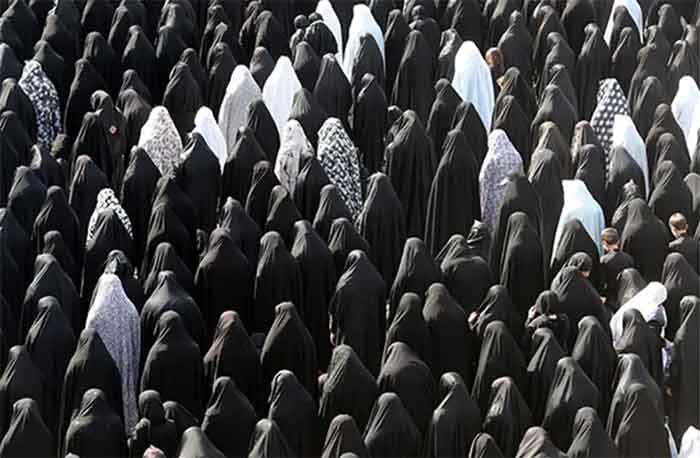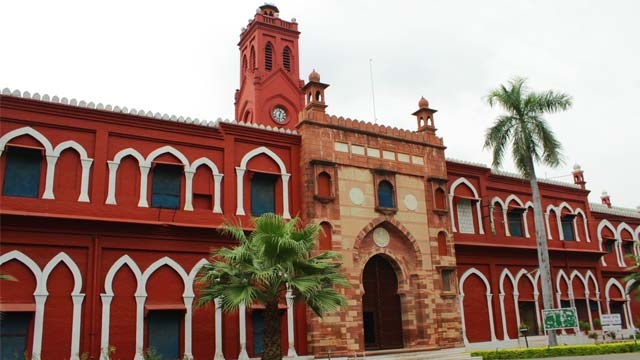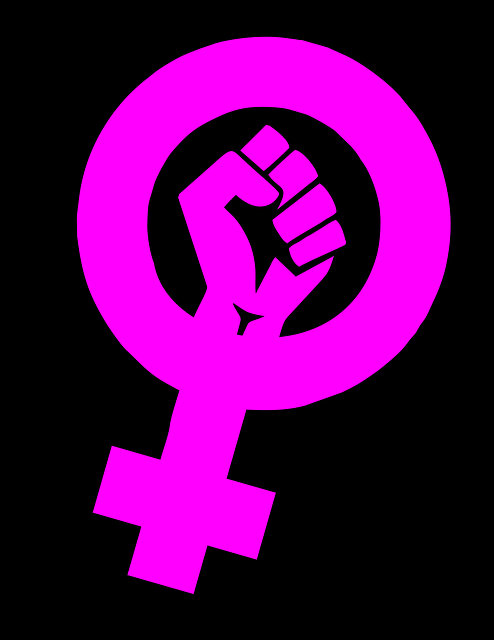
| In order to understand the edicts of a religion in an objective fashion, one has to look at the norms of the times the religion was offered. Islam was offered in a tribal-mercantile milieu. Women in the tribal age were treated as children, to be chastised when necessary. Islam, reflecting its mercantile face, eased their situation by ordaining that before actual beating, the husband should reprimand them and refrain from sleeping with them. If that does not help, beat them up with a light hand so no marks are left and not hit them on the face. But if you take religion as a Word of God, by all means beat them up, but make sure you are in Saudi Arabia, Afghanistan or at least Pakistan. Status of Muslim women was different under a) pristine Islam b) Umayyad period immediately following the Prophet and the first four caliphs c) Abbasid period following the Umayyad d) Turkish period e) Muslim rule in India f) Colonial rule g) Current crop of Wahabi regimes h) Secular regimes like Turkey, Algeria and a few other religiously anomalous regimes like Pakistan, Indonesia, Morocco, Tunisia and Nigeria. Muslims do not constitute a homogenous entity, as Edward Said very aptly put it in his book “Covering Islam”, “in popular Western perception it seems to mean one simple thing, but that is in fact, part fiction, part ideological label and part minimal designation of a religion”. Followers of Islam are broadly divided into a) Sunni,s b) Shias (predominantly mainline Twelve Imamites). They are roughly 4:1 in proportion. Sunnis and Shias, though accord the same status to their women folk. Women are clearly subservient to men, but not commodified as they are in Wahabi households. To analyze the impact of Islam on the status of women we have to look at the immediate pre-Islam Meccan society. It was tribal but had an active mercantile class. Mecca was at the crossroads of caravan routes and its denizens were exposed to diverse cultures. It was, of course, male dominated, but there were note- worthy women too. The prophet’s first wife was a businesswoman; the prophet had been her employee. The first Umayyad ruler’s (Muaviya) mother Hinda actually controlled her clan and incited them to fight against Muslims. Women used to openly propose to men. In fact when the prophet accompanied by his uncle, was going to visit his future wife Bibi Khatija to propose to her, a woman stopped him on the way and offered him a hundred camels if he would marry her. A male issue, specially the first one, was preferred to a female one[iii] and occasionally a father on the lunatic fringe would bury a female first born alive. Women did not have well-defined property rights, were given away to cement tribal deals or friendship between families or to compensate for damage done by one family to another[iv]. They were regarded as property. Education rare in any event, and was not deemed very useful, (the prophet had no formal education) so it is not surprising that girls would not get it. Remarriages and divorces were, however, not stigmatized[v]. The contention of Muslim publicists that women were totally downtrodden in pre Islam Arab society is thus not entirely true. They, in fact, enjoyed a better position than their contemporaries did in Europe. The prophet wrought great changes in the status of women, though they were never quite given parity with men. Newborn female murders were prohibited and women were given inheritance rights; girls getting half of what boys would get; if there was no male issue, the boy’s share would go to a paternal cousin etc. Given wisdom was that girls would be the beneficiaries of what their husband would inherit from their families. In actual fact the logic was entirely with in tribal norms; system kept the larger part of the property in the family. If a girl was given equal share, she would take a greater part to her husband’s house. Giving two third share of the property to a paternal cousin makes a lot of tribal sense[vi]. Women continued to be regarded as property, they continued to be given away to influential/wealthy families regardless of disparity in the age between bride and groom Female consent was made a requirement but was usually taken for granted. They continued to be regarded as emotionally unstable and rather feeble minded and unclean during the menstrual period and were not entitled to head an organization or the state[vii], had only half a vote in evidence and were not allowed to enter a mosque during their monthly periods. Over and above the legalistic changes, women did acquire higher social status. Prophets last wife Ayesha led an army against Ali and his grand daughter (Imam Husain’s sister) held soirees at her home. Women continued to hold their own during the rule of the first four caliphs and the following Umayyad period though segregation was introduced to keep family women from being “contaminated” by the influence of female slaves[viii] captured during wars. They lost ground during the Abbasid period. To consolidate their rule, they physically obliterated the leading Umayyads. They dare not treat the prophet’s family the same way, so wrested spiritual leadership from them by getting a collection of Islamic Scholars to ban for ever all “Ijtihad”[ix] Imam Ghazali needs specific mention. He wielded great influence on Muslim mind and did the greatest disservice to the religion by proscribing rational thought. The Abbasid are known to have coerced scholars to introduce several self serving “Hadiths” into collections of The Prophet’s sayings. Only the adherents of the prophet’s family, the Shias (Shia literally means adherent, Imam Ali’s (The Prophet’s son in law, and the fourth caliph’s supporters were called Shian Ali) continued to (and still do) accept “Ijtihad” . Abbasids saw the advent of feudal society with a caliph at the head of the hierarchy. Turkish caliphate was also based on feudal system. Historically women have had lesser status in feudal societies than they did in tribal ones. Roots of commodification of women go back to the advent of feudalism. Their status did not change through the whole period of Turkish rule and the later satrapies. Muslim period in India saw the intermingling of Arab/Muslim and Hindu/Indian cultures. Sanctity of motherhood was common to both. Muslims adopted the mores of sequestration of women, the stigma of divorce and loss of property rights, and female consent to marriage came to be taken even more for granted. Motherhood, however, acquired a higher status. The advent of Wahabism was serious setback to the status of women in Islam. In actual fact, Wahab did not make much headway till he made a compact with tribal chieftains who were conspiring with the British/French. Wahabi influence did not amount to much till oil money started flowing into the country and the rulers, in order to divert their attention from the lavish and ostentatiously un-Islamic life style of princes, persuaded the clerics to export their creed to poor Muslim countries like Pakistan (Initially Muslims of India), Afghanistan, Egypt, Sudan and several other such countries. Conservative Muslims were ironically more successful in secular India where the accommodating policies of the government allowed governance under Islamic personal law. In the notorious case of Shah Bano, the courts decided for her husband’s refusal to pay maintenance and PM Rajev Gandhi backed off from proposing a uniform personal law. World had been undergoing rapid change since WWII. The pace accelerated during the fifties and sixties. Muslims countries had essentially secular governments and were making progress in education and Industry. Then came the catastrophic humiliation of the six-day Suez war in 1967. In historical terms Pakistan Army surrender to Indian Army in 1971, Dacca was only a moment later. Wahabi clerics preached that Muslims were humiliated not because they lacked education, scientific and technological, but because they were no longer good Muslims. Saudi rulers bloated with oil wealth, had resources to spare and funded twenty two thousand religious seminaries in Pakistan alone and many more thousands all over the Muslim world. These schools offered food and shelter and attracted essentially young boys from indigent families, who were indoctrinated into flaming fanatics passionately ready to give their lives for the lure of paradise with all the alluring visions of a luxurious life forever afterwards. Fate played further into their hands. A few communist generals took over Afghanistan. Soviet Union government undertook to rescue them from certain over throw and American government jumped on the opportunity to avenge their defeat in Vietnam, poured in money and arms and trained seminary students in guerilla warfare. They were aided and abetted by the Pakistan Army/ Military Government. Through the civilian musical chairs between Zia and Musharraf, discriminatory laws like Hudood ordinance, which practically equated rape and adultery and wholly repugnant to the word and spirit of Islam, could not be abrogated as political leadership belonged to feudal landowners and religion is a key pillar of the system. One leading cleric, a deputy chief of Jamaat Islami, Moulvi Ghafur Ahmad publicly stated not too long ago, that murder committed under the umbrella of Honor killing was Islamic. The upshot of the resurgence of Wahabi creed is that women are fast losing ground. They are harassed, made to wrap themselves up into a veritable sack like a bag potatoes, have their movements restricted and generally life made intolerable for them. The reverberations have reached Europe, Canada and USA as well. Honor killings are committed in the UK, girls are forced into marriage and incidents of abduction ( after being drugged) are on record in Canada and USA. In North America and Europe, women are not allowed into the front door of a mosque, have to pray in a separate room and are otherwise relegated to a second-class status. All hope is not lost at least in the USA, the land of promise. A vibrant and courageous scholar Irshad Manji has taken up the cause and has confronted fossilized religion. Another valiant fighter Asra Nomani also took up the challenge and has faced off male chauvinists among the Muslims. There was a huge commotion but Professor Amina Wadood of Virginia was able to lead a male/female group in prayers. Status of women, Muslim or otherwise, is related more to diverse sociological, cultural, educational and economic factors than to theological doctrine. European women lag behind American women in empowerment, because Europe still retains vestiges of feudal society. (A Brooklyn N.Y. nurse of Greek ancestry, who worked with me during the nineteen seventies, went to visit Greece and stayed with her cousins. Her hosts demurred at her desire to go shopping alone. She sputtered with rage, swore at them in Brooklynese, called a cab and flew back to good old U.S.A). The vast majority of Muslim girls in western countries are confident, independent and worthwhile members of society, very much at par with men. Even the ones not born and brought up in America or Europe catch up with the natives very quickly. There is light at the end of the tunnel and they can reach it if only Muslim women in the USA stand up for their rights, use all the freedom offered by the American Society to break the bonds of serfdom, which are patently unfair even from the religious point of view.
Bio: I was born in Dewa Sharif, UP, India in 1939. I went to school from the fourth to eighth class in Gonda, UP and the 9th grade in Jhansi, UP, India. We moved to Quetta, Pakistan and went to school for the 10th grade and intermediate college in the same town. I was in Karachi University 1954-57, then Dow Medical College 1957-62. I Was in the National Students Federation from 1954 to 1962, trained in surgery in the Civil Hospital Karachi 1962-65, proceeded to England 1965 and trained in General surgery and orthopedic surgery till 73, when I left for Canada 1973-74, USA 1974-83, back to Karachi 1983 and built a hospital and went back to the USA in 1991, been in the USA since. I retired from surgery in 2005. I have worked in various HR and Socialist groups in the USA. I have Published two books ,:”A Medical Doctor Examines Life on Three Continents,” and ,”God, Government and Globalization”, and am working on the third one, “An Analysis of the Sources and Derivation of Religions”. |
GET COUNTERCURRENTS DAILY NEWSLETTER STRAIGHT TO YOUR INBOX

















































